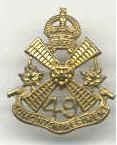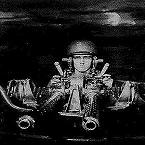AmiralLaurent
Posts: 3351
Joined: 3/11/2003
From: Near Paris, France
Status: offline

|
quote:
ORIGINAL: DJAndrews
The time needed to take and consolidate a semi-major base is substantially different than in UV and the tenacity of the retreating Japanese is remarkable (after the base has been captured). In the Mariannas campaign, I captured Saipan on July 15 with about 50K troops compared to 30K Japanese (after beating down the fortifications). A month later the base has been built up to 4(P)/7(A), I have 60 K of supplies and fuel and 60K troops who have been attacking the Japanese who survived. The Japanese have been unsupplied for all that time and I've been attacking almost daily (resting just enough to maintain about an 80% active troop rate) and there are still about 18000 enemy troops left (I'm killing about 500 a day). Oh yeah, they've also been under constant air attack and occasional ship bombardment. Tough buggers. I hope the Allied troops give as good an account of themselves in the game.
No, Allied troops surrender when they are defeated and can't retreat. Marines may do the same perhaps as Japanese, in the same situation, but even them were allowed to surrender when out of supplies and ammo.
The strategic planning is increased by the size of the map, that will divide by 2 the speed of TF sailing from one point to another. So if you want to invade PM from Japan, ships will take one month to go there.
Another difference is that 60-miles hexes are used rather than 30-miles. That means that ship's speed are halved by two. And there is a rather bad secondary effect: TF are far more likely to meet each other. When you had 4 hexes in UV, you have only one in WITP so you have four more chance to intercept an enemy TF with sub or ASW group or surface force. It seems to me that the probability of a real encounter is the same as in UV despite the fact that the hexes are 4 times greater. So the ASW groups have really no problem to find submarines.
Just for a TF that crosses a WITP hex, in UV it will sail across 2 of them (out of the corresponding 4), so your chance to attack a TF with a sub if twice bigger.
|
 Printable Version
Printable Version










 )
) 
 New Messages
New Messages No New Messages
No New Messages Hot Topic w/ New Messages
Hot Topic w/ New Messages Hot Topic w/o New Messages
Hot Topic w/o New Messages Locked w/ New Messages
Locked w/ New Messages Locked w/o New Messages
Locked w/o New Messages Post New Thread
Post New Thread